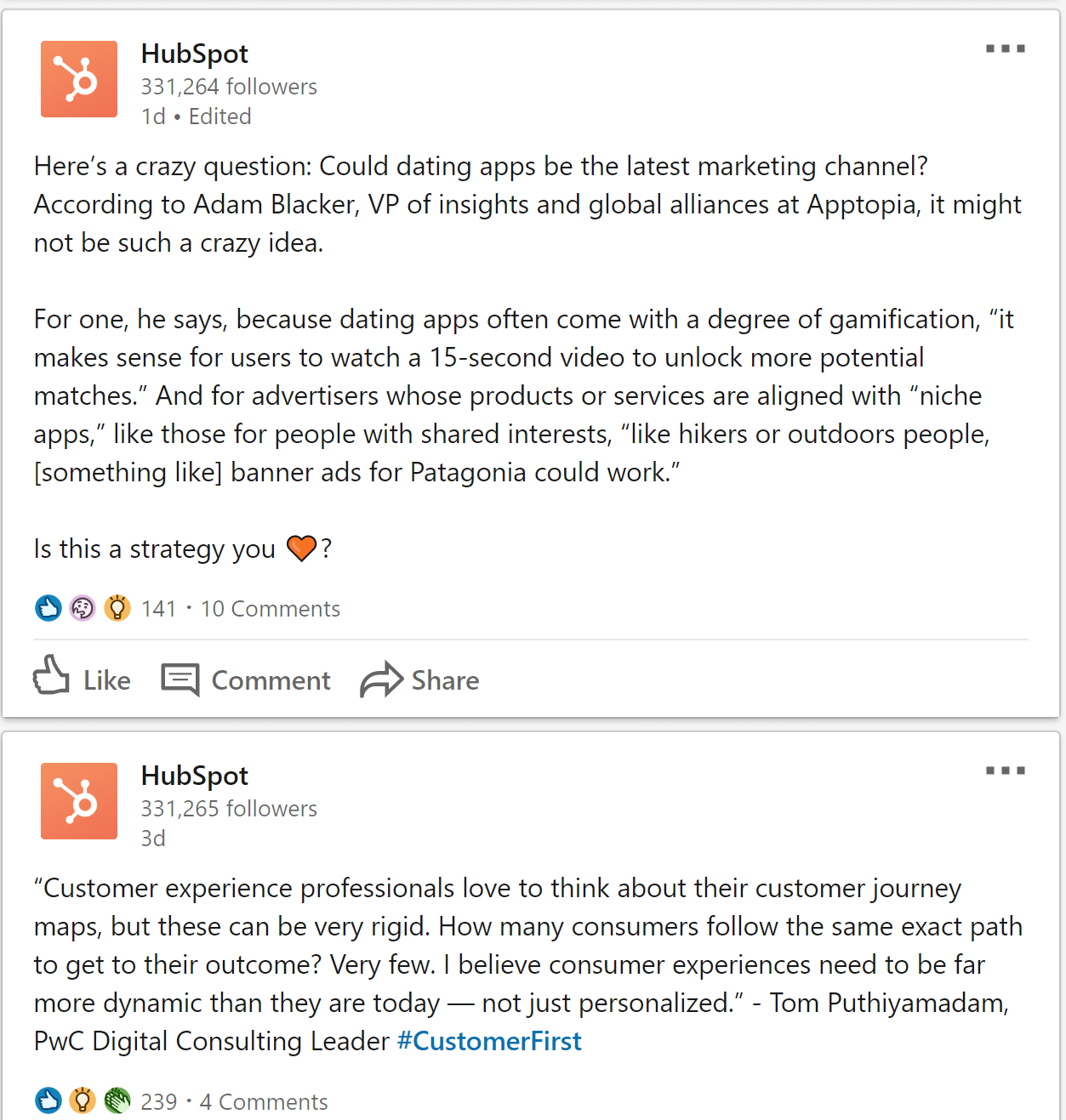So, you’ve got thousands of social media fans and followers. Are most of them visiting your website? If the answer’s no, you’re not alone, and that’s just the way those social media sites like it.
Let’s face it, the way social media sites make money is by keeping people on their platforms looking at ads and promotions. (Some believe social media is deliberately addictive.)
But don’t worry, it’s not a lost cause. With the right strategy, you can successfully wean those social media followers over to your website, making your business more successful. Here’s how to achieve this.
Discover the Truth About Your Social Media Audience
Here are a couple of things to understand about social media fans and followers:
First of all, the term ‘social media audience’ is misleading. It’s not one big group. If you’re using different social media platforms, you have different social media audiences. This means you need different content to grab their attention.
For example, Sprout Social’s roundup of social media demographics shows that:
- Most Facebook users are female. Facebook users span all age groups, but users are often older than, say, on Instagram
- Instagram is widely used by people under 29, including 72% of those aged 13-17
- LinkedIn is a popular network for college graduates, and B2B users
This is just a snapshot, but it shows the variation among the different social sites.
Second, many social media users have relatively short attention spans. In part, that’s driven by the sheer amount of content that’s scrolling across their screens every minute. Like web audiences, they’re probably suffering from content shock, which makes it impossible to pay attention to everything.
If you want to get attention and win those all-important clicks back to your website, don’t take a cookie-cutter approach, dig into what works on each platform.
How to Figure Out Your Social Followers’ Interests
A good starting point is to examine the data. Every social media site provides information on your followers. There’s demographic information on age, gender, income, education, interests and so on.
For example, here’s a snapshot of what you might see on your Facebook ad dashboard:
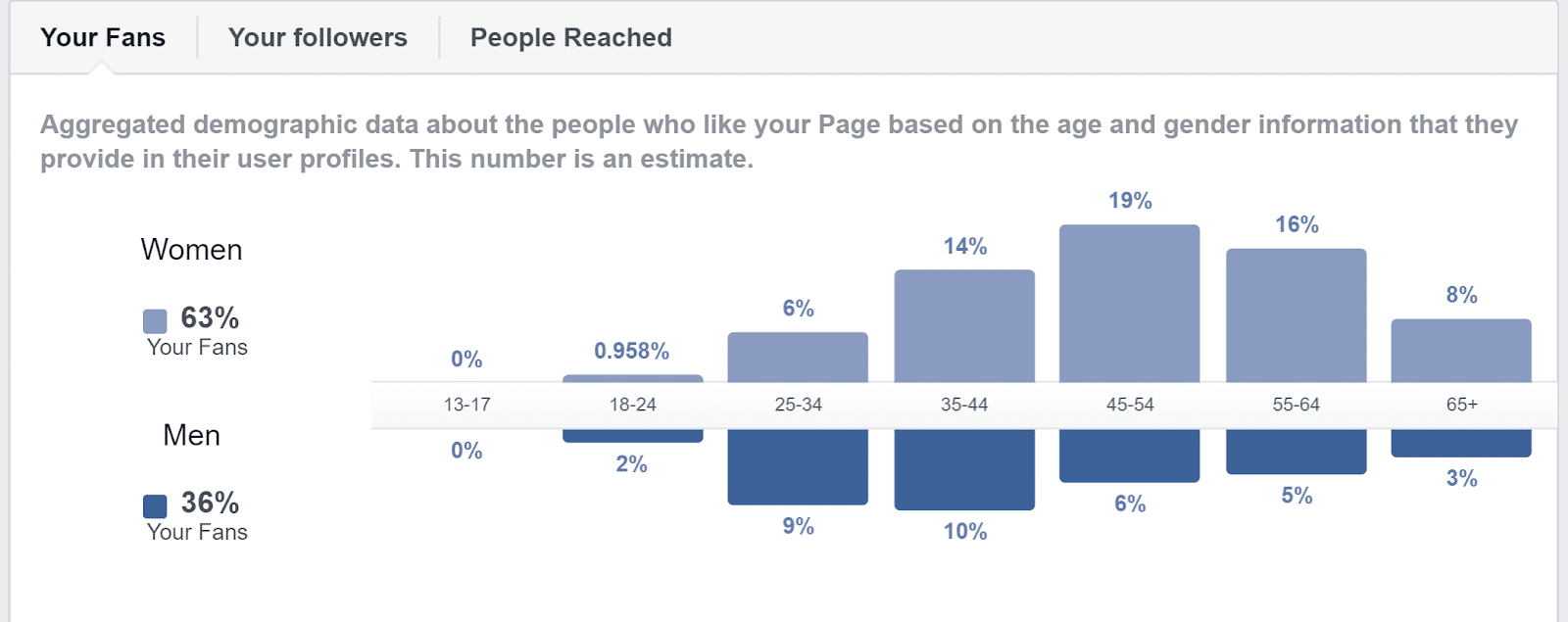
There’s also important information about what people are clicking on and engaging with. In the example below, it’s clear which posts got most engagement from the audience. 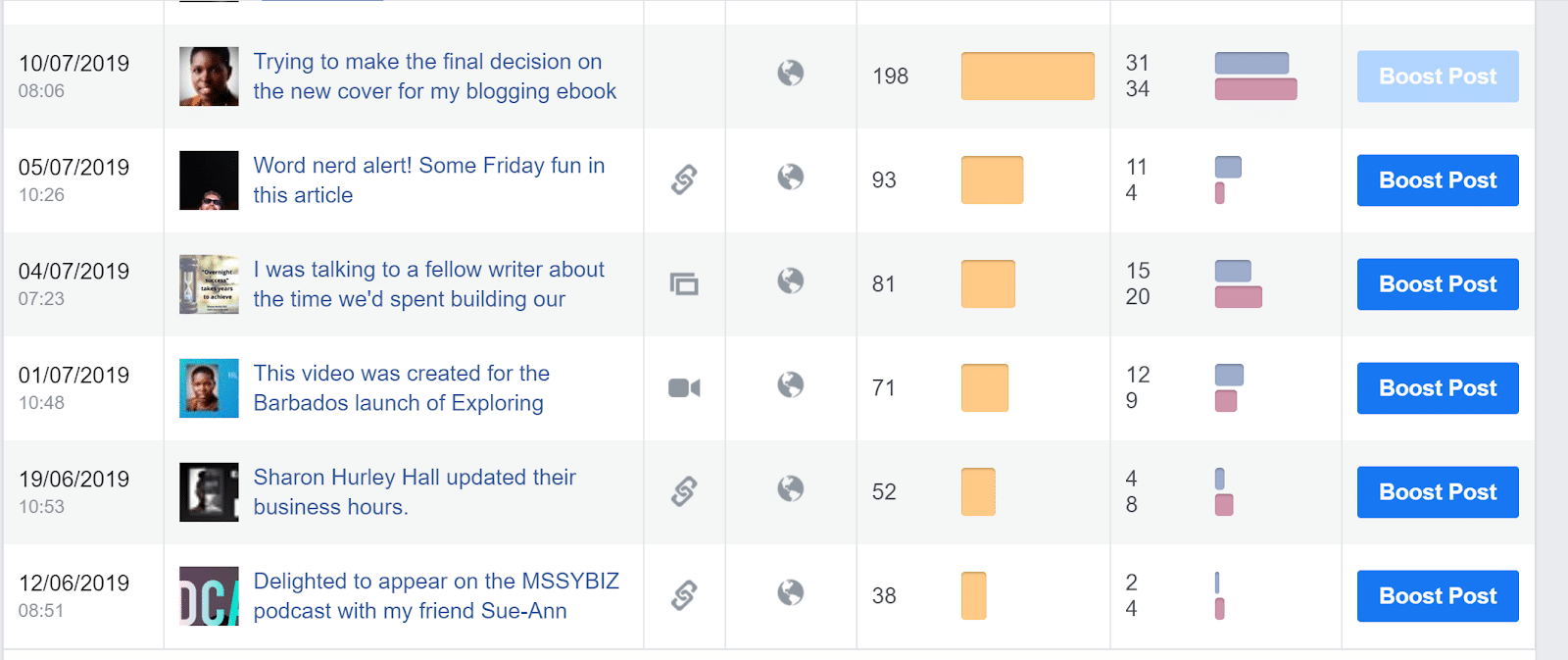
If you know what’s attracted attention in the past, this is a good starting point for creating attention-grabbing content in the future.
Build Social Media Creatives That Convert to Traffic
You can give yourself the edge by building enticing native ads on your social media channels. This will highlight your best content, and make sure those who are most interested in it get to see it.
News Stories Lead to Popular Topics
Popular topics are a good starting point. We’ve used the Taboola Trends tool to identify what’s getting the most buzz right now. As the screenshot shows, if you have content relating to news stories about Apple, the iPhone, or the US president, you’re pretty much guaranteed to get attention, especially since two-thirds of people now get news via social media.
Face Size or Color in Images? Depends on the Niche
Most social media sites are visual, so choosing the right images makes a huge difference to the attention you get. For example, in the business niche, across all devices, using larger face sizes results in more clicks.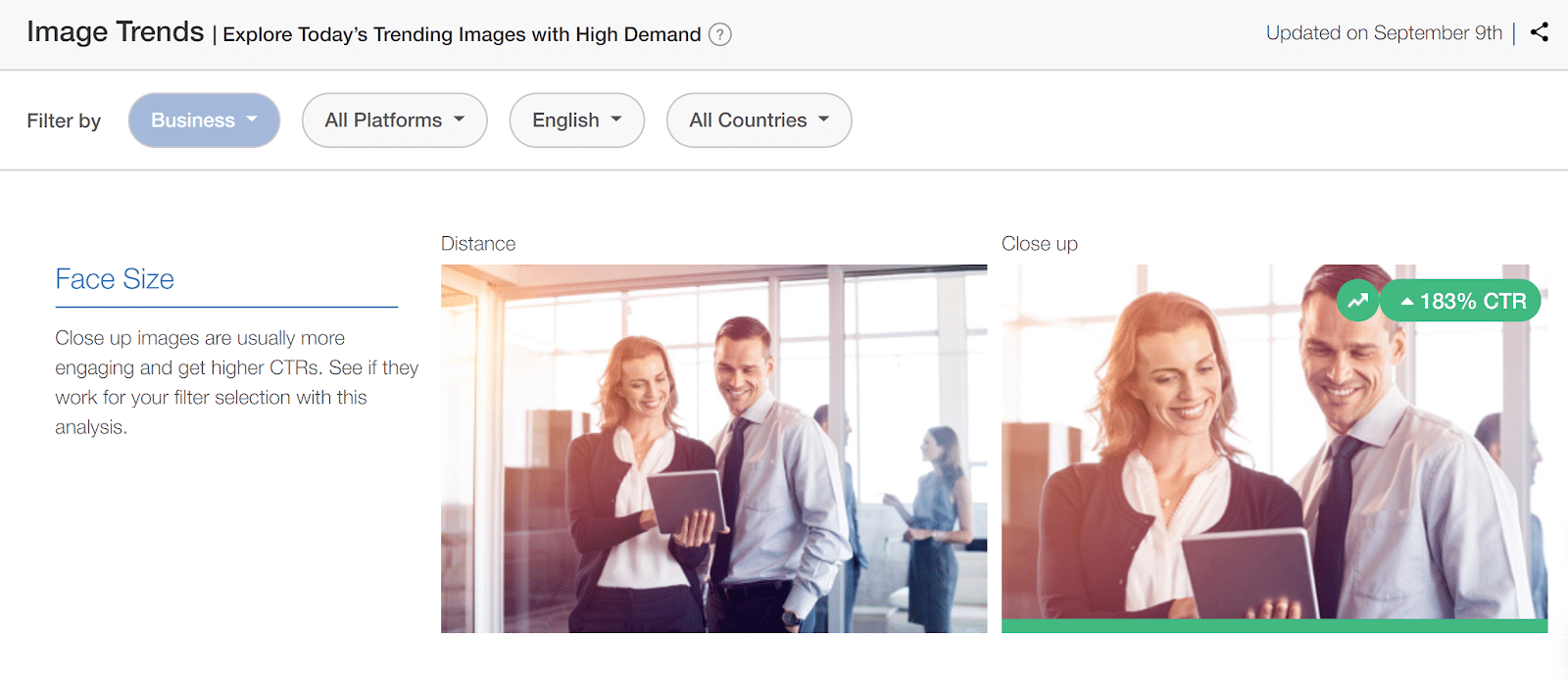
But, if you focus on tablets alone, the color of the image (rather than the size) is the most important factor. If your audience is mainly using tablets, then black and white images will get more attention than color ones.
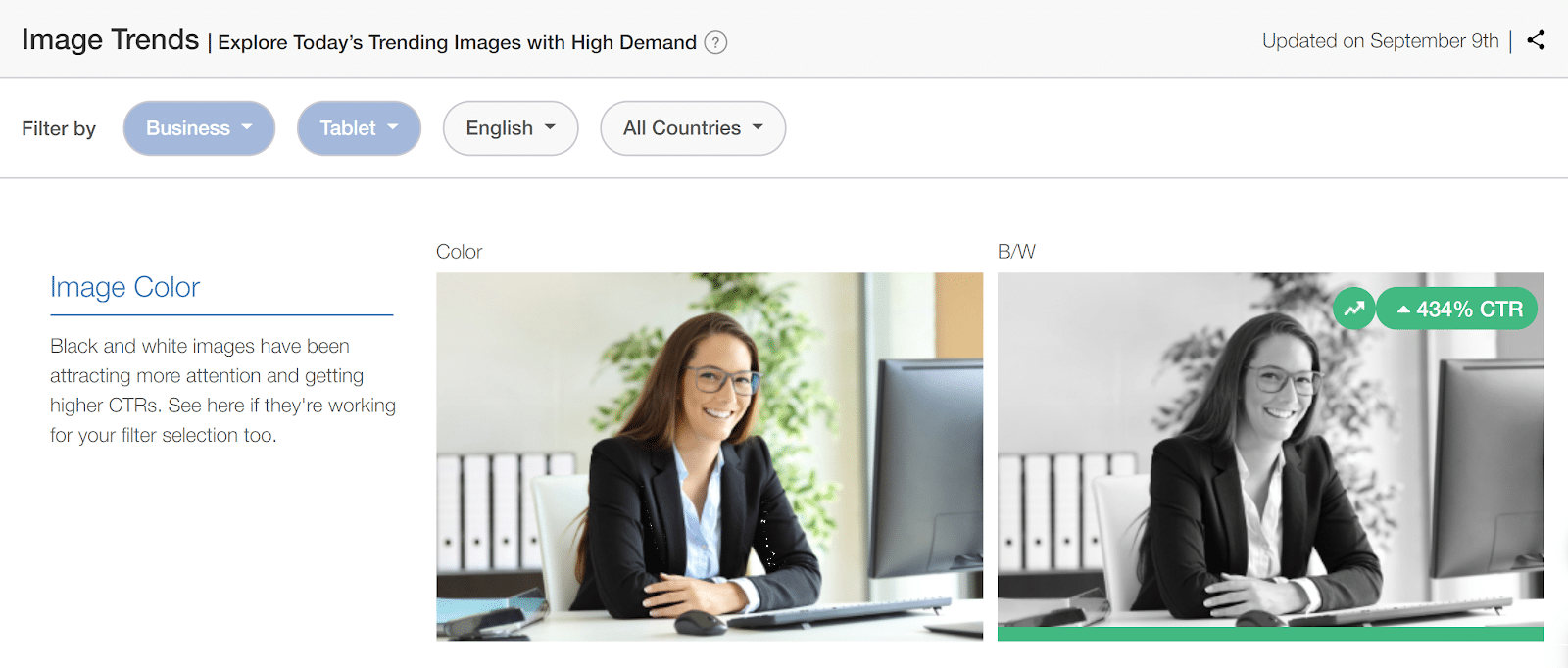
Location Matters with Video Topics
With video topics, it turns out that location is a big factor in what’s popular, and what’s not. Based on the trends, a UK audience isn’t that interested in videos featuring animals or illustrations.
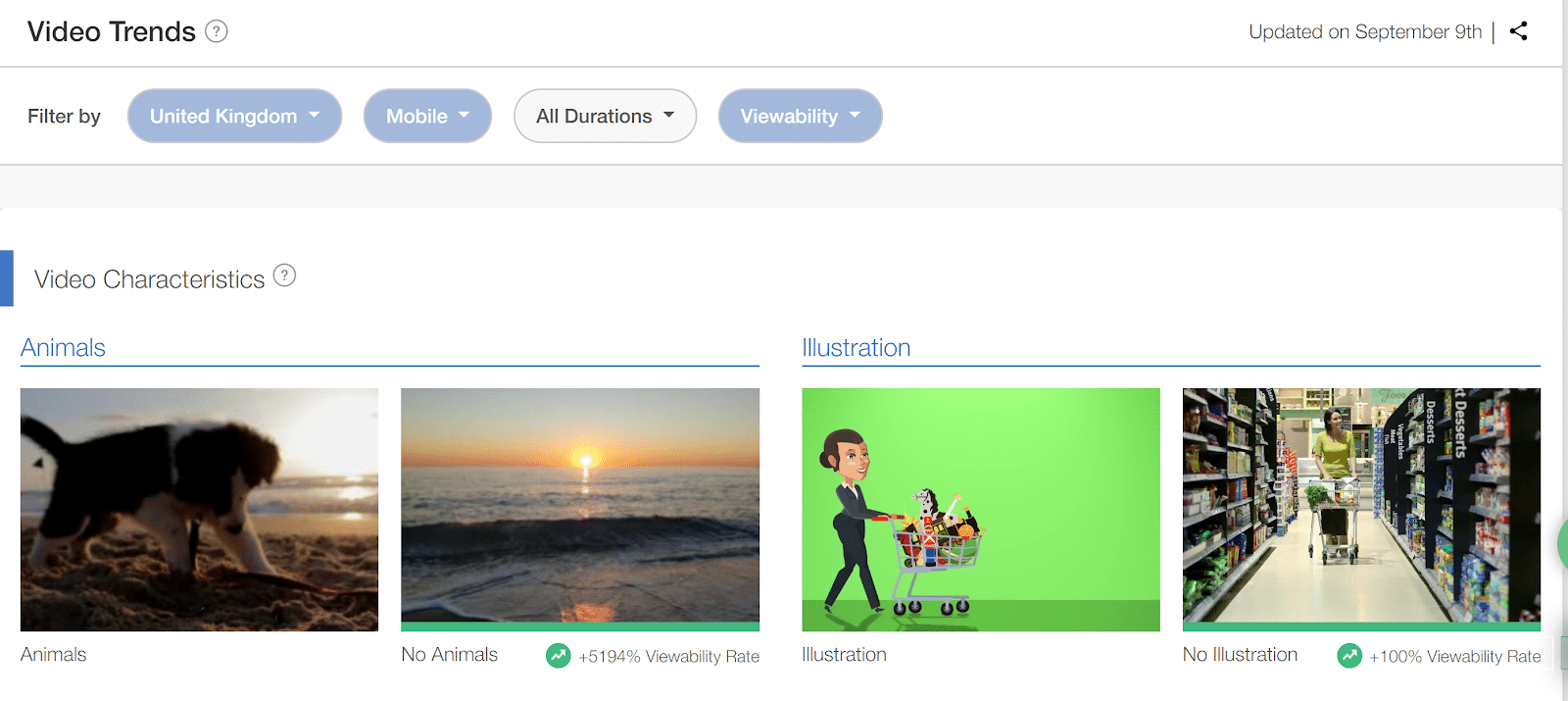
In contrast, using illustrations in videos for the US market increases the completion rate by 52%.
Follow Keyword Trends for Engaging Headlines
When you’re ready to write titles, check out the most engaging keywords. Since 80% of online attention goes to the headline, it’s worth spending time on this.
If you’re in the beauty business, for example, increase audience engagement by using titles that feature the words ‘laser,’ ‘make,’ ‘Japanese,’ ‘hairstyles,’ or ‘age.’
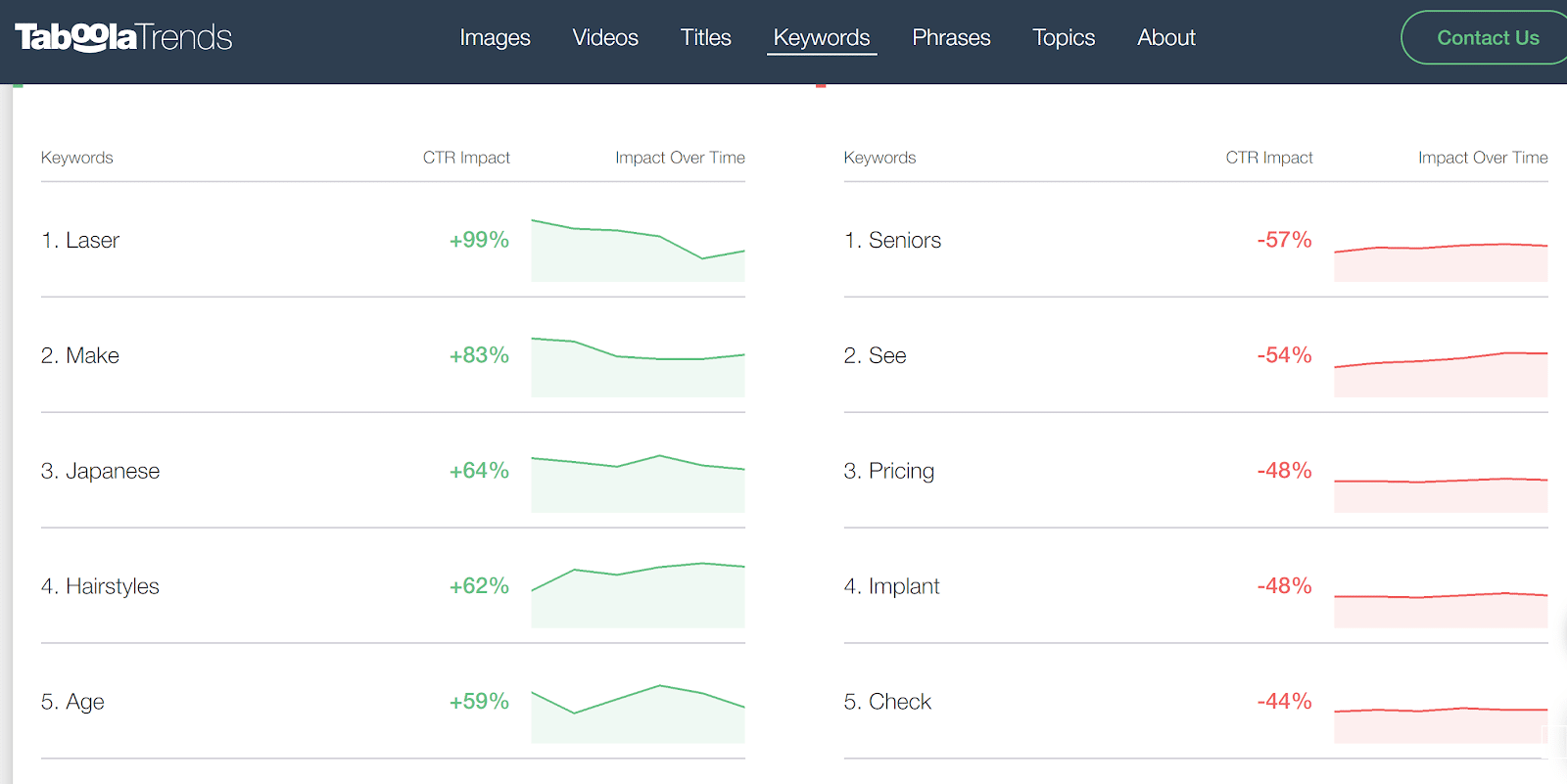
The tool also lists keywords where there might be an engagement opportunity, as in the screenshot below.
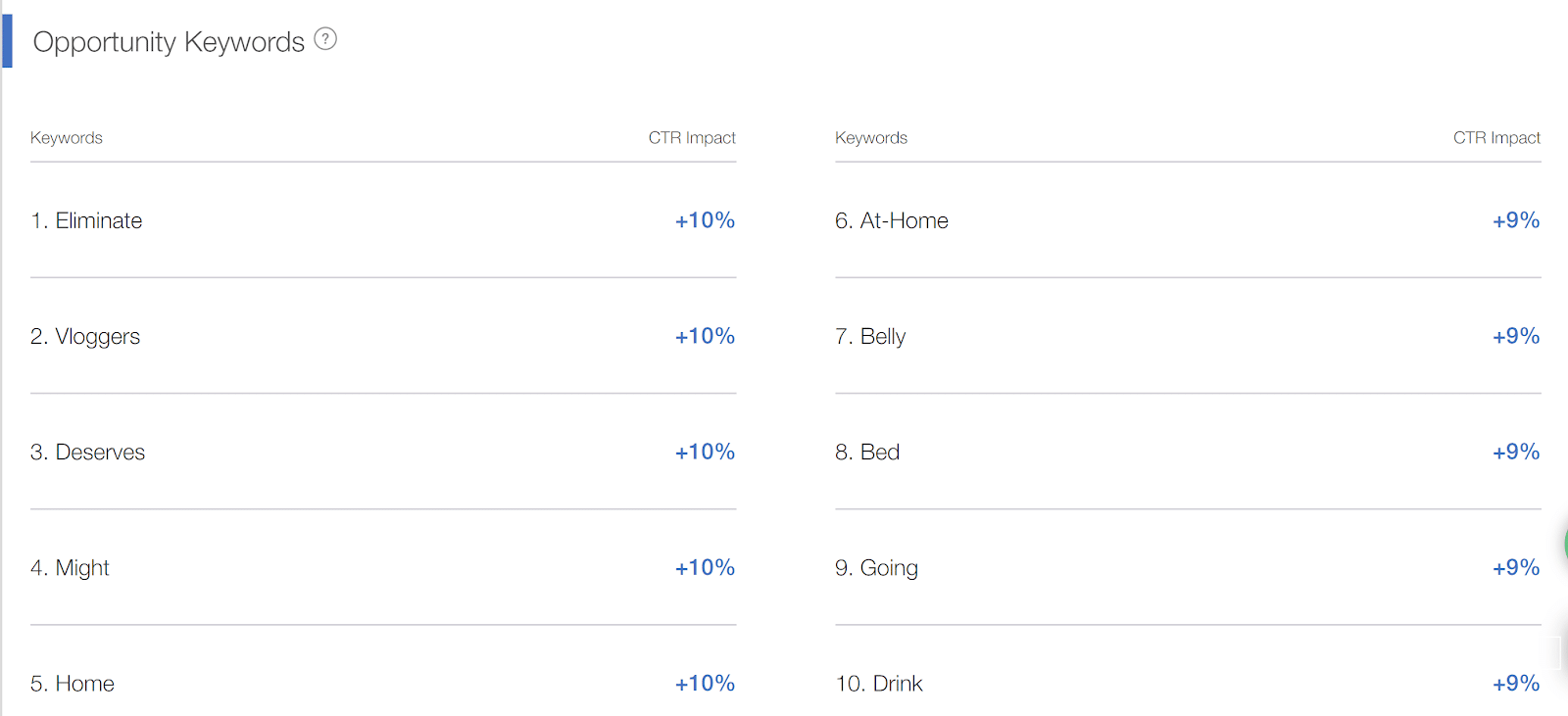
Here’s one experiment with the keywords we found in the beauty niche.
We came up with two possible headlines:
- Take 10 Years Off Your Age – New Japanese Laser Treatment
- 7 Stunning Japanese Hairstyles for the Modern Age
Then we tested them with the Taboola titles tool, which measures likely click-through rate (CTR). The title about ‘stunning Japanese hairstyles’ vastly outperforms the title about ‘Japanese laser treatment.’ That’s probably because the laser title sounds a bit hyped, a no-no when writing engaging headlines.
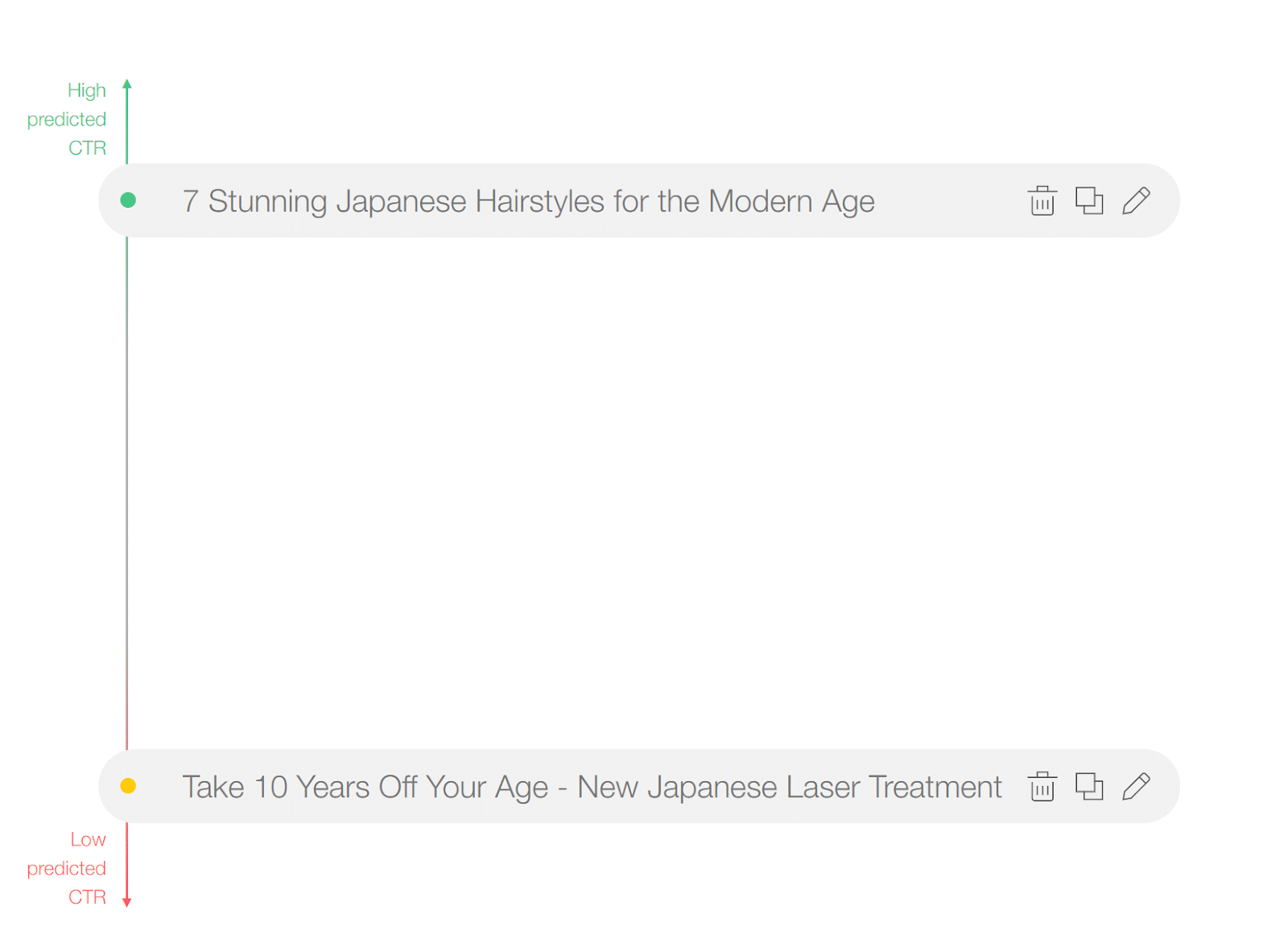
We continued the experiment, by creating a title using some of the opportunity keywords:
- Eliminate Belly Fat – New Japanese Diet
That title shot to the top, suggesting that an audience is more interested in diets than hairstyles.
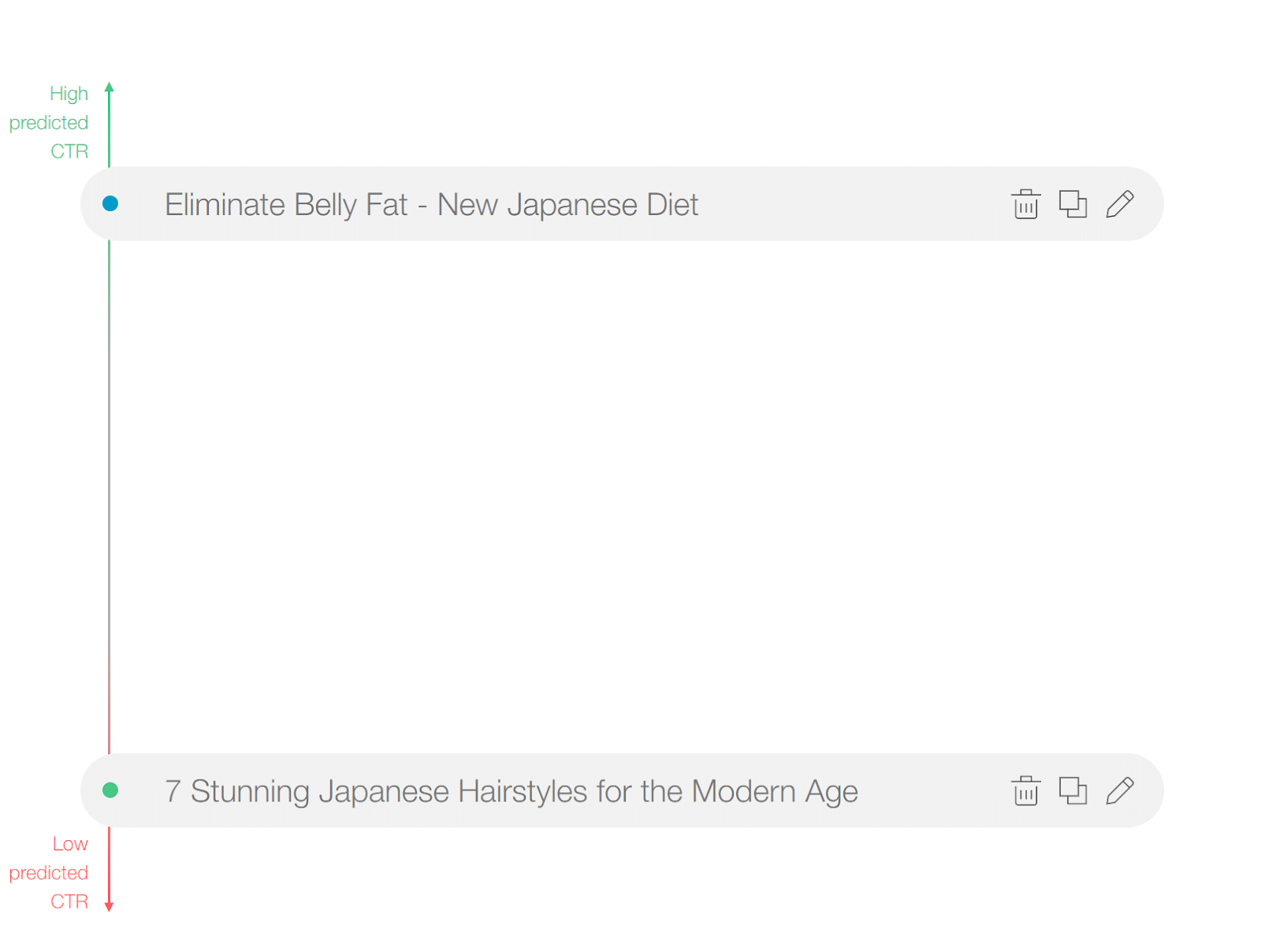
As you’ve seen, using Taboola Trends can help you to craft social media posts that attract visitors to your website, but there are a few more things you can do to boost your social media content.
Other Ways to Make Your Social Media Content Convert
Combine your specific knowledge of your audience with general guidelines on what works on various platforms. This research from Axios is a good guide to what users want from different platforms, and what that means in terms of content.
Post Evergreen Content
At the same time, use BuzzSumo, or a similar tool, to check out evergreen content trends. If a topic has been popular for a while, your take on it has a good chance of attracting an audience. This is a good complement to the current data in Taboola Trends.
Get Personal
Apart from the trends, know that social media followers love a peek behind the curtain. Don’t be afraid to get personal, and share insider stories about your business or brand.
Meet Followers’ Expectations
One crucial factor of high converting social media content is delivering on your followers’ expectations. That’s why it’s best to avoid deceptive titles and to favor those that lead to a valuable piece of content. If you disappoint visitors once, you may never get another chance. In other words, deliver what you promise.
Use Visibility Hacks
Explore ways to make your content more visible. For regular social media posts, something as simple as adding the right number of hashtags makes a huge difference to how easy it is to find. You can also try influencer marketing. A trusted recommendation goes a long way in gaining you visibility and website clicks.
Ask Followers to Take Action
Finally, don’t be afraid to ask for the click. Add a call to action to encourage people to visit your site, and make sure there’s a payoff for them when they do.
3 Inspiring B2B Social Media Examples
Looking for some inspiration? Here are some effective examples of B2B social media.
GE
General Electric (GE) doesn’t just sell home appliances; it provides business needs too. It’s known for varied and interesting social media, giving inside views of what’s happening at the company, and asking people to engage.
In the example below, someone from GE Power has taken over GE’s Twitter account for the day to show how turbines work. It is not to everyone’s interest, but with nearly half a million followers, GE’s doing something right.
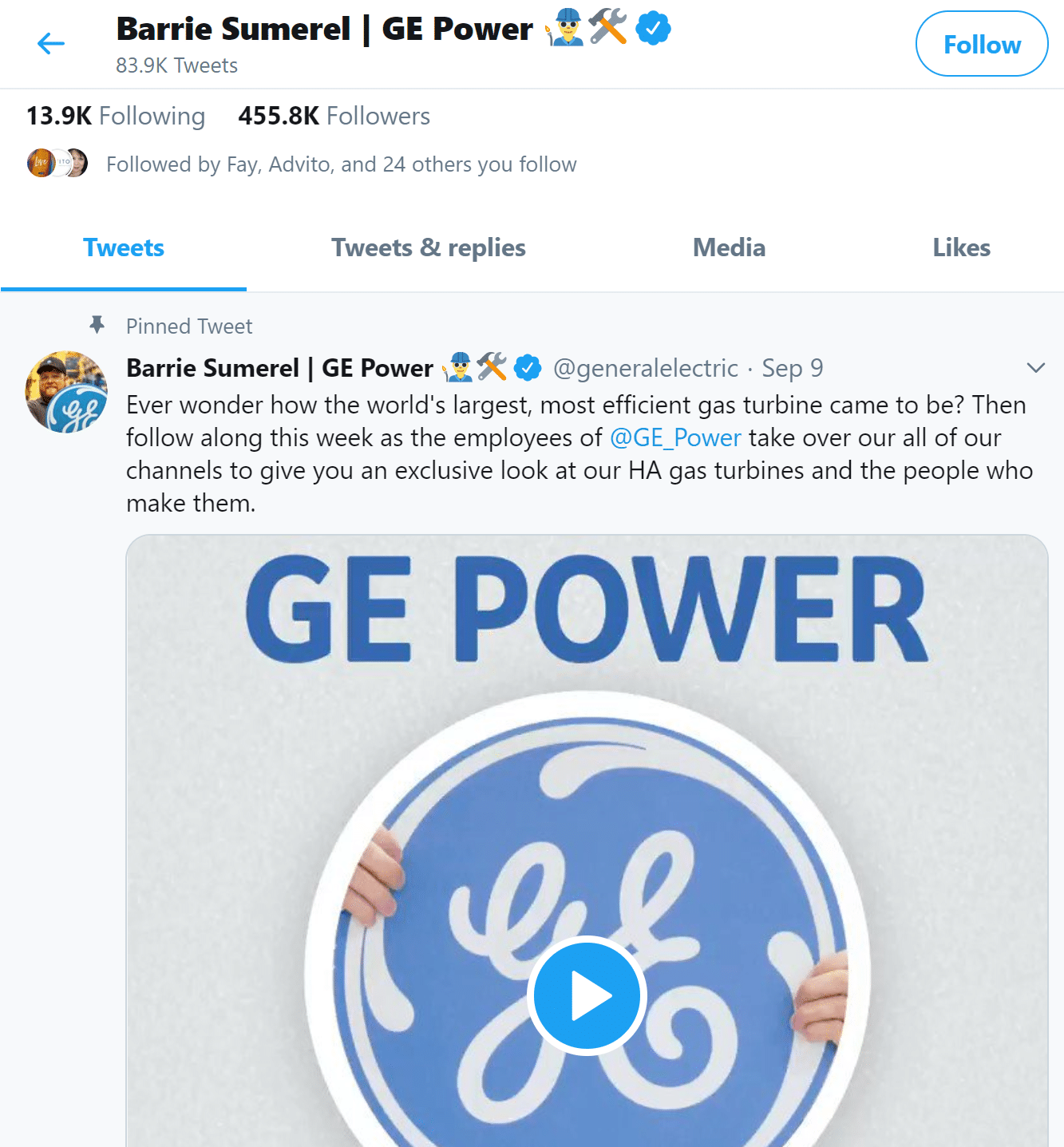
Gartner
Stats and research can be dull, but Gartner livens this up with audio, video and images, gaining excellent engagement and bringing traffic back to its site.
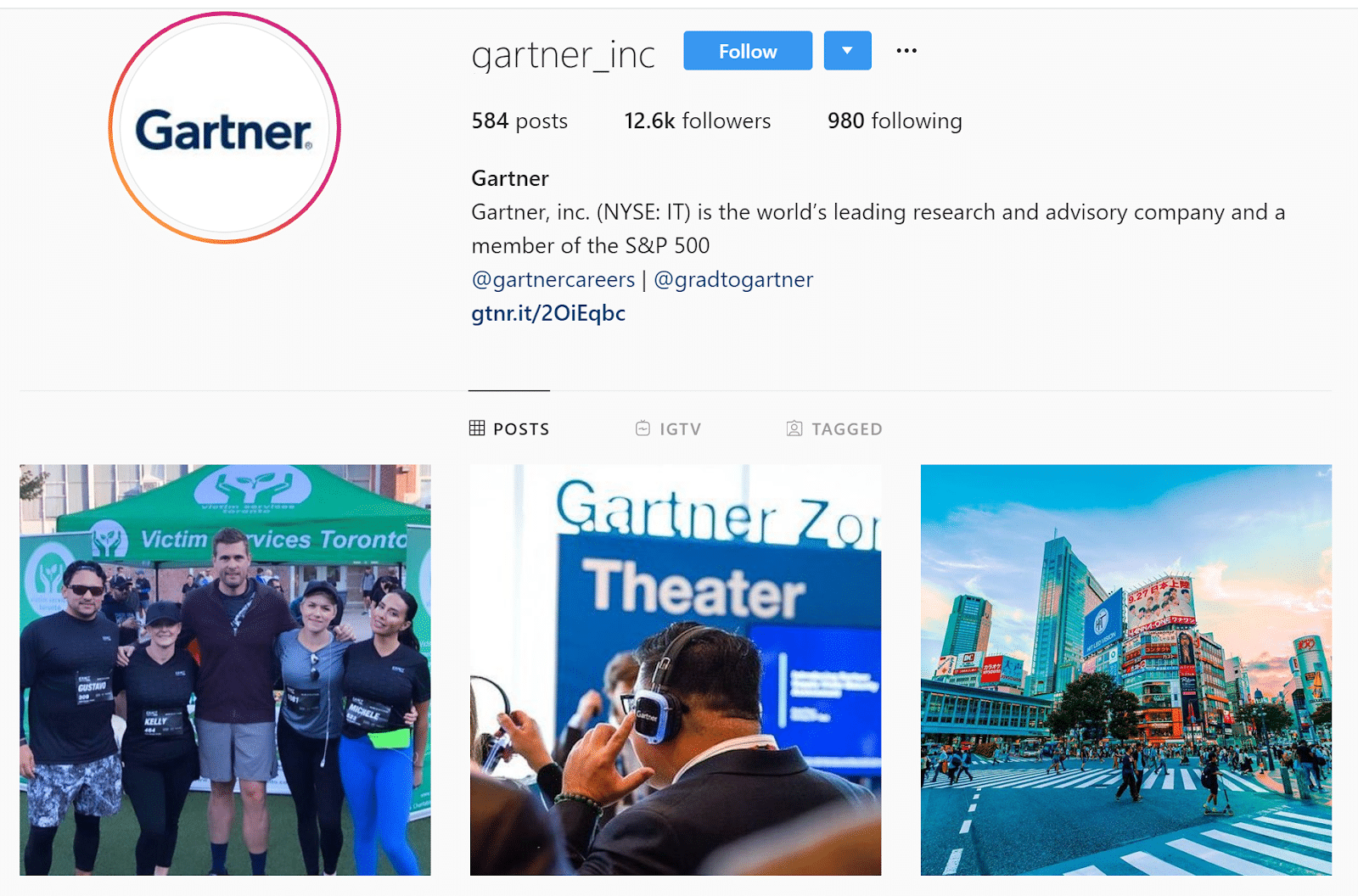
Hubspot
Hubspot is a pioneer in inbound marketing (aka attracting people back to your site). So, it’s not a surprise that the company’s online presence practices what it preaches.
Hubspot’s got a number of social media profiles and several LinkedIn groups. It uses these to inspire business owners, to show what’s happening inside the company, and to build brand awareness and engagement.
